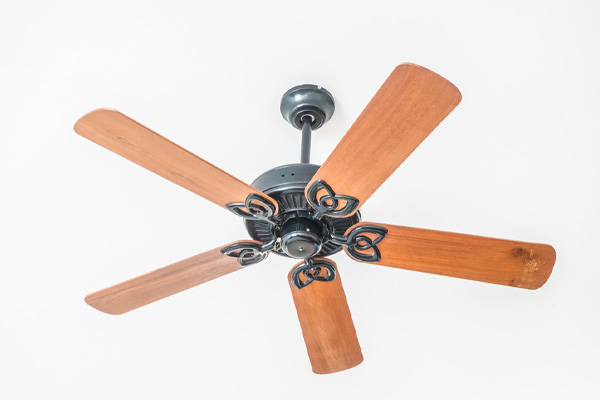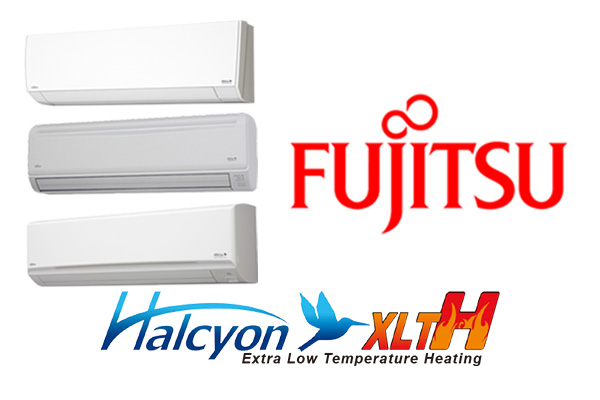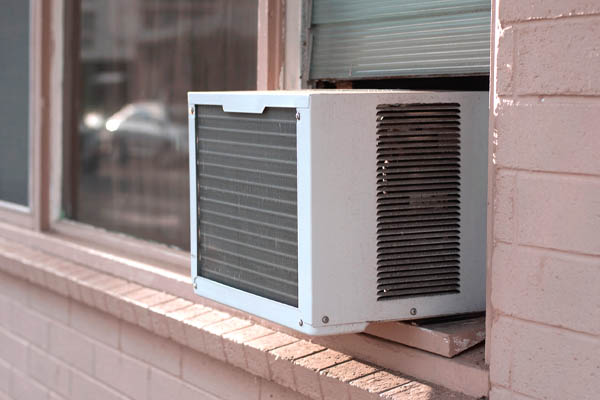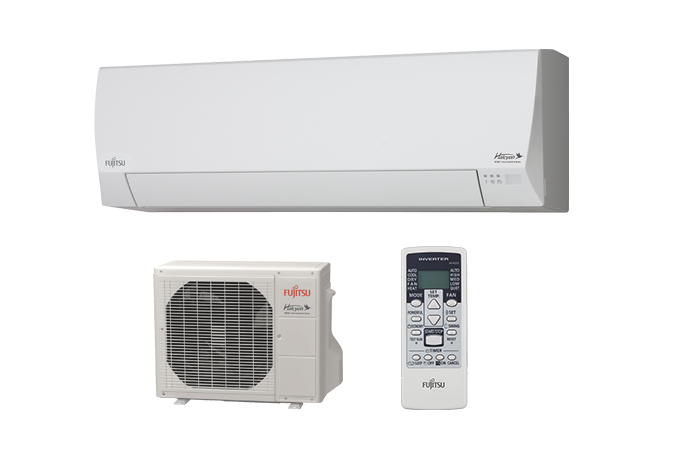How To Cool A Room Without AC
 Some homes have rooms consistently hotter than others. Occupants of such a room are typically uncomfortable and eager to get relief. Some households go through the summer months without any modern AC unit. For example, old and historic homes usually don’t have air conditioning. Luckily, several methods can be done to keep a room without or lacking an AC cool. It is best to talk to your trusted HVAC company about how to cool a room without AC. HVAC companies can recommend several practical and affordable ways to remedy these issues.
Some homes have rooms consistently hotter than others. Occupants of such a room are typically uncomfortable and eager to get relief. Some households go through the summer months without any modern AC unit. For example, old and historic homes usually don’t have air conditioning. Luckily, several methods can be done to keep a room without or lacking an AC cool. It is best to talk to your trusted HVAC company about how to cool a room without AC. HVAC companies can recommend several practical and affordable ways to remedy these issues.
Cooling a Room Down Without Air Conditioning
Contents
- Cooling a Room Down Without Air Conditioning
- Close & Cover Your Windows
- Close Your Doors & Insulate Them Properly
- Keep Your Oven Turned Off
- Switch to Cooler Light Bulbs
- Set Up Fans Strategically
- Keep Indoor Humidity In Check
- Let in the Cool Nighttime Breeze
- Have a Ductless Air Conditioner Installed
- Understand the Drawbacks of a Window A/C
- The Benefits of Ductless Mini-Split Air Conditioners
- Conclusion
- Call Point Bay Fuel For Your Air Conditioning Requirements
Keep reading to learn of eight simple tips you can cool a room without proper air conditioning.
Close & Cover Your Windows

Homeowners can stop the heat from coming inside a room using blackout curtains. Around 76% of the sunlight that shines into rooms via windows raises the temperature indoors. Therefore, ensure the blinds, curtains, or other window treatments are completely closed. According to the Department of Energy, using medium-colored curtains with a white plastic backing helps lower indoor temperatures. A good strategy to achieve natural insulation is to use blackout curtains in your home.
Close Your Doors & Insulate Them Properly
The majority of the time you are inside is spent in one room, so shut every other door around your house leading to other rooms. You can retain more cooled air in occupied rooms when you close off the unused areas of your home. Invest in insulation if the doors have any gaps, especially those that lead outside. Weatherstripping is an affordable insulation method that you can install on your own.
Keep Your Oven Turned Off

Ovens and stove burners produce a huge amount of heat, so be wary about using these and other heated kitchen appliances when there are high outdoor temperatures. It is a good option to grill your food outside or whip up some summer recipes that don’t need heat to prepare.
Switch to Cooler Light Bulbs
They are less noticeable than stove tops or ovens, but light bulbs also emit a significant amount of heat. Incandescent bulbs generate the highest heat amount and waste around 90% of the energy they use. Use LED bulbs or compact fluorescent bulbs instead, as they can keep your home cooler.
Set Up Fans Strategically

Fans aren’t designed to cool the indoor air because they simply move it around. Therefore, how you position and use your fans matters. The best way to distribute cool air is to use fans to create a nice cross breeze that forces hot air out and circulates cooler air. Search for the coldest area in your home and place a fan there so it is angled towards hotter sections. This draws the cool air from one location while pushing out hot air. Placing an ice bowl in front of your fan works as well. This will blow cold air from the ice into your living space.
Keep Indoor Humidity In Check
A dehumidifier cannot reduce indoor temperatures, but it can help you limit how much sticky, thick air is present that will make your living space intolerable. You will feel both sweatier and hotter if there’s high humidity, as it reduces the time sweat evaporates.
Let in the Cool Nighttime Breeze
Opening your windows at night can cool your room if you live in an area with lower nighttime temperatures. Ensure that you close them in the morning. Draw your blinds and curtains too.
Have a Ductless Air Conditioner Installed
 If you have one or more rooms in your home that are always problematic, consider installing a ductless air conditioner system. This type of system has two main components: an indoor unit and an outdoor unit. Wiring and refrigerant hoses connect these two components. The compact indoor unit delivers cooled air and can be installed on any ceiling or wall. The outdoor unit releases hot air outside.
If you have one or more rooms in your home that are always problematic, consider installing a ductless air conditioner system. This type of system has two main components: an indoor unit and an outdoor unit. Wiring and refrigerant hoses connect these two components. The compact indoor unit delivers cooled air and can be installed on any ceiling or wall. The outdoor unit releases hot air outside.
This setup brings many benefits. One is its flexibility regarding where the indoor unit can be placed. Unlike a window air conditioner, it doesn’t need to be installed in a window. It can be placed high on an interior wall, so there are minimal disruptions in interior decor and vertical storage.
The second is that the unit can be placed in any room. There isn’t a need to utilize a perimeter wall as the indoor and outdoor units are separate. Inner rooms can also work well for mini-split systems. This is especially beneficial in larger buildings.
Last is that ductless mini-split units won’t block your window, the view throughout the day, or the natural light. This is ideal for small rooms or zones within the home that have a limited number of windows. Additionally, ductless air conditioners will likely be quieter because the noise-producing component is installed outdoors.
Understand the Drawbacks of a Window A/C

Window air conditioners have all the major parts in one unit. They push the hot air outdoors from one end and push cold air inside from the other. These units must be installed in a room with a window or a perimeter wall. They are usually simple and inexpensive, but they have several cons. These include different limitations that make them less attractive than ductless mini-split air conditioners. These are:
- They are noisy.
- They are expensive to use.
- They block out the natural light and views when installed in windows.
- They can only cool down one room.
- They are more likely to develop bacteria and mold that will lower indoor air quality.
- They are unattractive and even attract thieves to enter your home as they offer a point of ingress.
The Benefits of Ductless Mini-Split Air Conditioners
 Ductless air conditioners are more expensive to install than window air conditioners. However, ductless ACs are much more energy-efficient, so you can enjoy lower home cooling bills. This way, you can have considerable savings in the long run. Other advantages include the following:
Ductless air conditioners are more expensive to install than window air conditioners. However, ductless ACs are much more energy-efficient, so you can enjoy lower home cooling bills. This way, you can have considerable savings in the long run. Other advantages include the following:
- They are designed to be inconspicuous.
- They operate quietly.
- They also help maintain an adequately high indoor air quality as they are equipped with multi-stage filters. Air pollutants can get in your home when air conditioners lack adequate filtering. These pollutants may cause respiratory problems or make existing respiratory conditions worse.
Conclusion
Although you can use the strategies listed in this article, they are all less than ideal for different reasons. Installing a ductless air conditioner is the best choice if you want to achieve consistent and uncompromised cooling, indoor air quality, and security.
Call Point Bay Fuel For Your Air Conditioning Requirements

Point Bay Fuel provides superior heating and cooling services in Ocean and Monmouth Counties, New Jersey. Our company has the best professionally certified technicians who can offer exceptional HVAC replacements, repairs, tune-ups, and installations. All our techs have the right tools, knowledge, skills, and experience to service your HVAC system correctly.
Our company guarantees the area’s most competitive heating and cooling service prices. Our maintenance services increase your energy efficiency and comfort while reducing your home cooling bills. We can recommend the best, budget-friendly HVAC repair or replacement system solutions for your home when needed. We back all our work with a guarantee. Call Point Bay Fuel to schedule an air conditioner tune-up or service appointment. We offer free, in-home estimates.
Contact us now by calling (732) 349-5059 to speak to one of our home comfort specialists! Click the link to view our service area.
